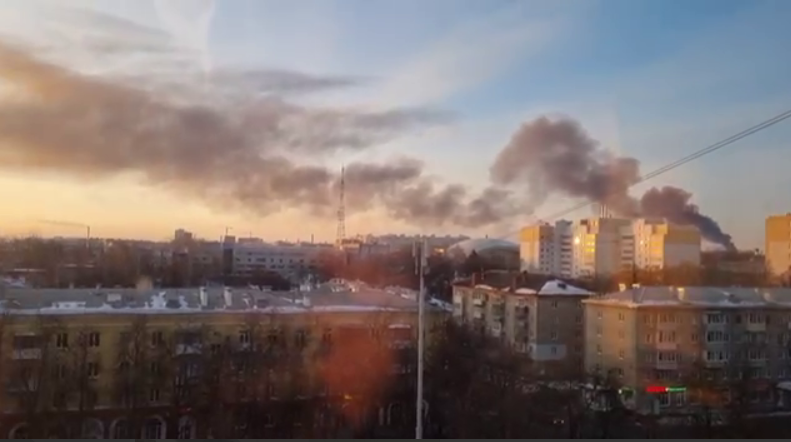Russian forces are facing challenges in successfully deploying air defense systems against Ukrainian drone strikes, according to a report by the Institute for the Study of War (ISW). The report highlighted the struggles of Russian forces to protect important targets in “well-defended areas” within Russia from Ukrainian drone attacks. Ukraine has intensified its drone strikes on Russian oil refineries, disrupting a significant portion of the country’s refinery capacity. In response, Russia is now forming mobile fire groups to defend against Ukrainian drones, but the ISW predicts that the Russian military will struggle to field these groups at the required scale in the near term.
Ukraine began deploying tactical mobile fire groups to counter Russia’s Shahed drone attacks in the spring of 2023. However, the scale of the drone threats faced by Russia spans a much larger territory, including targets in occupied Ukrainian territory as well as locations throughout Russia. Analysts point out that it remains unclear if the mobile fire groups will be able to effectively defend the extent of territory targeted by Ukrainian drones. The ISW predicted that these groups may be more effective in occupied Ukrainian regions than within Russia itself, raising concerns about potential vulnerabilities in Russia’s air defense capabilities.
President Volodomyr Zelensky of Ukraine stated in an interview with the Washington Post that Ukrainian forces will continue to target Russian oil refineries, which are considered legitimate military targets. Zelensky emphasized that Ukraine will use Ukrainian weapons to conduct these strikes, highlighting the country’s determination to disrupt Russia’s refinery capacity. The ISW report also noted that the formation of mobile fire groups by Russia could indicate challenges in deploying conventional air defense systems, such as Pantsir-S1 or S-300/400 systems, to all critical facilities within western Russia. This suggests potential limitations in Russia’s ability to protect key infrastructure from drone attacks.
The ISW report raised concerns about the ability of Russian forces to properly deploy short-range air defense systems along expected flight paths for Ukrainian drones. The report also highlighted instances where important potential targets in reportedly well-defended areas within Russia were left unprotected from drone strikes. Russia’s struggle to effectively defend against Ukrainian drones underscores the evolving nature of modern warfare, where unmanned aerial systems can pose significant threats to traditional air defense systems. The ongoing conflict between Russia and Ukraine has showcased the increasing reliance on drones as a strategic weapon in military operations, reshaping the dynamics of warfare in the 21st century.
As the conflict between Russia and Ukraine continues, both sides are adapting their strategies to counter evolving threats on the battlefield. The intensification of drone attacks by Ukraine on Russian targets, particularly oil refineries, has forced Russian forces to rethink their air defense capabilities. The formation of mobile fire groups by Russia represents a response to the challenge posed by Ukrainian drones, but questions remain about the effectiveness of these groups in defending against a wide range of targets. The conflict in Ukraine serves as a stark reminder of the importance of independent journalism in providing timely and accurate information to the public, shedding light on the complexities of modern warfare and the strategic decisions taken by military forces. By supporting independent journalism in Ukraine, individuals can contribute to the broader efforts to uphold transparency and accountability in times of crisis.


